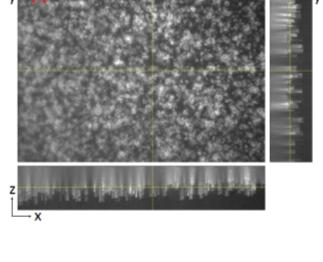-
Claire Walsh August 27, 2019 at 5:12 pm
Hello
I have been trying to perform a blind deconvolution on 3D image stacks I have taken using a serial sectioning WF fluorescent imaging technique I’ve been developing. I have spent quite a lot of time trying various deconvolution plugins and implementing nearest neighbour deblurring methods but I have not had much luck, the nearest neighbour method had issues with noise enhancement. I recently tried the EpiDEMIC plugin and I think it may be promising, but I don’t fully understand how to get the best out of it.
One of the main problems I have is that the imaging I perform is not a straight forward wide-field fluorescence but has a sectioning component. In brief, a fluorescent-stained sample is embedded in a hard resin block; an image is taken of the block surface, then a thin (1um) section is automatically cut and a another image take etc.

The result is an image stack which have a comet tail like artefact in the xz and yx planes (see image above). I am quite a novice at deconvolution but I believe that this asymmetry in the out-of-focus light is the source of my problems with techniques I have tried so far.
I know of a group using a similar imaging technique which manages to deconvolve using an R-L method but with a measured PSF. Due to technical difficulties I cannot image sub-resolution beads to get a PSF and so am looking for a blind solution. Does anyone have any ideas as to how I could best approach this?
The forum ‘Plugins’ is closed to new topics and replies.